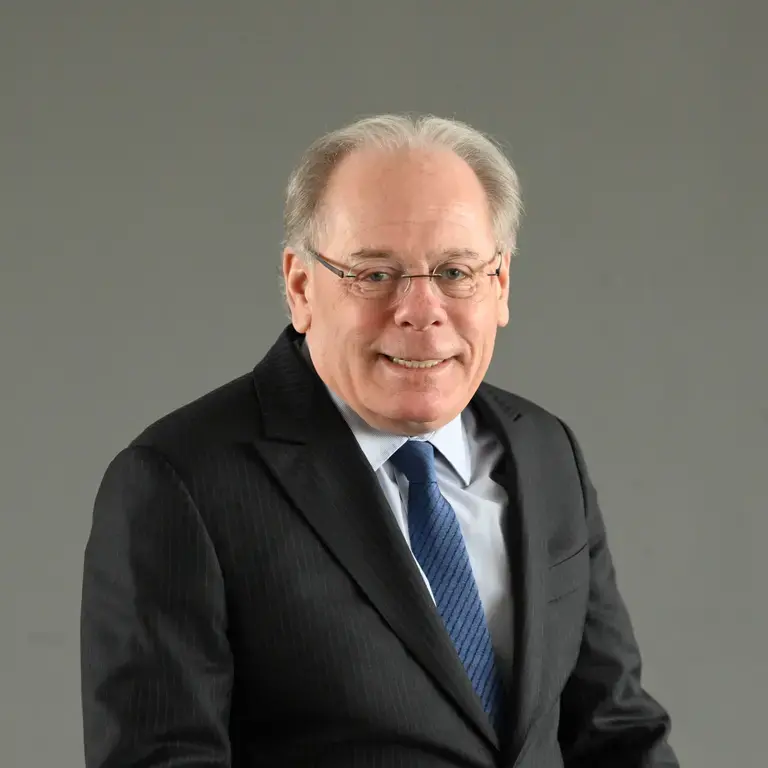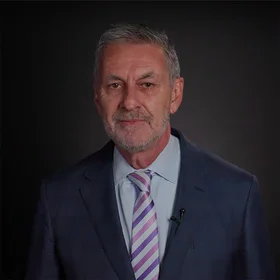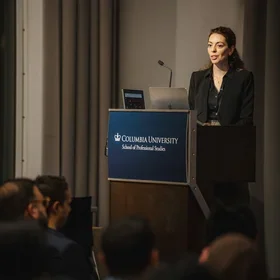By Dr. Steven Cohen, Senior Vice Dean, School of Professional Studies; Professor in the Practice of Public Affairs, School of International and Public Affairs
Since its founding in 2002, I’ve read over 3000 applications to SIPA’s MPA in Environment Science and Policy program. Since its founding in 2010, I’ve read more than 4,000 applications to SPS’s MS in Sustainability Management program. Both programs were developed in partnership with Columbia’s Earth Institute (now part of the Climate School). I helped create and continue to direct both programs, and I insist on reviewing every application that’s submitted. If a student doesn’t turn out well, I know who to blame (me). More to the point, I learn a great deal about those attracted to the emerging profession of sustainability policy and management. Our choices on curriculum design are a factor of three forces: intellectual integrity and coherence, the views of our alumni and employers, and the views of our students. We are developing a new profession, and our curriculum must be both practical and intellectually rigorous. Very often our applicants tell us what they believe they need to be effective professionals, and we take their input very seriously.
The two programs have overlapping curricula but very different designs. The MPA in Environmental Science and Policy program is built on a traditional public administration/public policy degree structure and is a demanding cohort program that starts at the end of May and is completed the following May after packing 4 semesters of work into a 3 semester, 54-point schedule. Its students commit to a full-time program with only 4 electives. These students build a wonderful community in each cohort and share many elements of a collective curriculum.
The MS in Sustainability Management program is very different and, by design, much more flexible. Only 2 of 12 courses are required, and the other 10 must fit into carefully designed fields, such as management/finance or the physical dimensions of sustainability. About 60% of these students work full-time and come to campus in the evening when most of the sustainability management courses are offered. Students can enter the program in September or January and can shape their program to meet their specific professional and intellectual interests. The MPA is a 54-credit degree; Sustainability Management is a 36-credit degree.
While the programs are different, their curricula overlap, and the applicants are surprisingly similar. The MPA is offered by a public policy school and has a public-sector orientation, and the Sustainability Management program is much more focused on the private sector. Despite this distinction, there is a cultural and even ideological overlap that is easy to see. The way I learn the most about these students is by reading two sections of the application. One section asks students to explain to us why they are applying and what elements of the program attracted them. The second is their personal statement, where applicants often convey deeply personal reflections about their past and their hopes for the future.
In contrast to a decade ago, I’ve noticed more students discussing a damaged waterway, a ruined forest, or a scenic vista obscured by air pollution. Often, they relate conversations with their parents or grandparents about deteriorating environmental conditions that these close relatives have seen in their lifetime. There are frequent mentions of the climate crisis, occasional mentions of species and biodiversity decline, and many discussions of environmental justice. The deteriorating environment is a life-long and deeply personal part of their life experience.
What I never see is any sense of hopelessness or despair. Of course, it makes sense that young people who have given up are not about to sacrifice their time or treasure to become environmental sustainability professionals. In contrast, unconstructive environmental radicals will be throwing paint at works of art or disrupting traffic at a UN environmental conference. Those folks are not my students. What is clear in the best applicants is their pride in the work they have already done and their sense of urgency about developing the professional and analytic tools they need to do more. Many of our applicants have been working on environmental issues for a high proportion of their still young lives. They express a sense of mission and determination. They recognize the powerful forces lined up that continue to place profit above the planet, and they think they can build businesses or develop policy incentives that allow companies to profit without damaging the planet. Some might be over-optimistic or idealistic about what’s feasible, but I can tell you that America’s traditional can-do spirit is well represented in this applicant pool. And that includes the students from outside the United States.
Many of these applicants are creative and entrepreneurial. They are part of a start-up generation, ready to risk their time, energy, and even their money (if they have any) to build a sustainability business. Financial and job security matter to some, but fewer than one would think and many fewer than their predecessors as degree applicants ten or twenty years ago. When I began as an environmental educator in the late 1980s, and we launched SIPA’s Environmental Policy concentration, I did not think about developing an environmentally focused profession. We were simply trying to prepare graduates to work in environmental government agencies, the consulting firms that serviced them, and the NGOs that lobbied governments. A few courses on environmental statutes, politics, international environmental diplomacy, and managing local water utilities were added to a course on environmental science for policymakers, and we were ready to roll. The private sector market for environmental MPAs was a few decades in the future.
Twenty years ago, very few applicants had enrolled in any undergraduate environmental courses since many of these courses had not yet been developed. Today, I often see applications from majors in environmental studies, environmental science, and a range of related fields. I am learning about the incredible growth of environmental studies at the undergraduate level, and that means that our own curriculum must constantly evolve to keep pace. Fortunately, that is happening in both of the master’s programs I direct.
Many prospective students are expressing their goal of obtaining specific analytic tools that now have marketplace demand. They enroll in courses on green finance, sustainability metrics, greenhouse gas measurement, lifecycle analysis, and corporate sustainability reporting. Our applicants express a deeply practical, pragmatic, and even careerist urge to build the skills and connections required to develop a lifelong career as a sustainability professional. Since that is what these two master’s programs are designed to do, our faculty are happy to respond to this demand, and we have built our curriculum and the broader community to envelop our students in a setting that nourishes their quest for professional skills and engagement. Both programs are characterized by instructors who are working professionals or working research scientists. Very few are full-time academics. None are tenured faculty. That frees us from the academic curriculum discussions where faculty who have never actually done any non-academic professional work aggressively express their views on what aspiring professionals “need to know.” This is replaced by courses that prepare our students for reality.
The final lesson I learn from these applications—and from my students once they arrive—is how welcoming, community-minded, and inclusive these people are. They are mission-driven but see the problems we are addressing as too complex to be addressed without a team. They are group-minded: starting and joining the many clubs and groups open to them. When they see a need for a new group, they find a faculty advisor and start one. A few days ago, I met with a leader of a new biodiversity student group. We have groups such as Women and Sustainability, “Build it Green,” the Circular Economy, Sustainable Finance, Electric Vehicles, Environmental Entrepreneurs, Equity Alliance, and Net Impact. There is a very active Environmental Science and Policy Student Government and a terrific Sustainability Management Student Association. These groups are funded by the university but run by graduate students. They are the heart of a community built by students and alumni.
I am constantly inspired and motivated by these applicants, our students, and our graduates. They know that the challenges of building a sustainable and renewable resource-based economy will take generations of sustained, determined, and creative effort. It is painful when applicants don’t meet our standards and we must reject them, because it is a rare application that does not convey the applicant’s vision and orientation toward our mission. Fortunately, there are more graduate programs in environmental policy and sustainability management today than when we started. These applicants now have alternatives. My SIPA program ends its recruitment of new students on February 15 (since it starts at the end of May), but the SPS program will be accepting applications until May 1. The work of reviewing applications continues, as do the inspirational lessons I always take away from the admissions process.
Views and opinions expressed here are those of the authors, and do not necessarily reflect the official position of Columbia School of Professional Studies or Columbia University.
About the Program
The Columbia University M.S. in Sustainability Management program offered by the School of Professional Studies in partnership with the Climate School provides students cutting-edge policy and management tools they can use to help public and private organizations and governments address environmental impacts and risks, pollution control, and remediation to achieve sustainability. The program is customized for working professionals and is offered as both a full- and part-time course of study.



